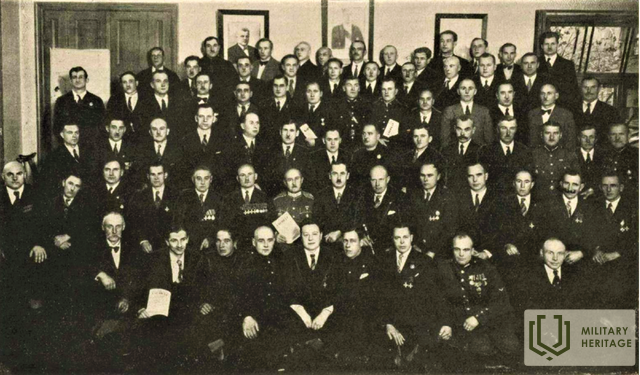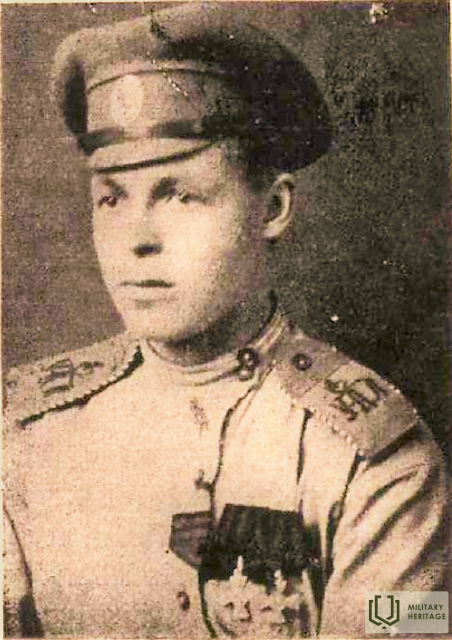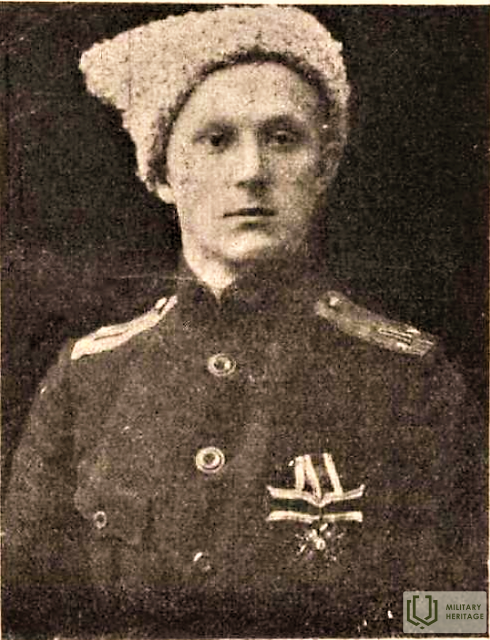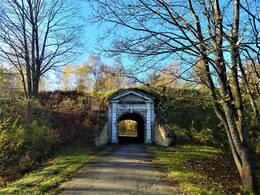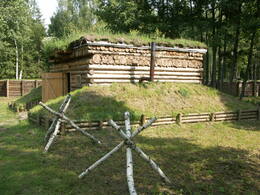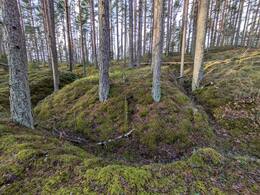1-asis Daugavgrivos latvių šaulių pulkas I WW1
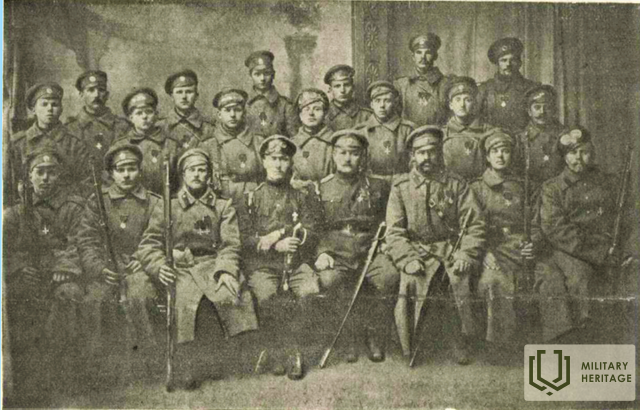
Prasidėjus Pirmajam pasauliniam karui, latvių karininkai ne kartą kreipėsi į aukštesnio rango Rusijos karines institucijas su pasiūlymais sukurti Latvijos nacionalines karines formacijas Rusijos kariuomenėje. Tačiau šios iniciatyvos buvo atmestos. 1914 m. pabaigoje Dauguvgrivos tvirtovės tvirtovėje buvo suformuoti du jungtinės Dauguvgrivos tvirtovės gvardijos darbo kuopų batalionai, kurie nuo 1915 m. kovo mėnesio dalyvavo mūšiuose Lietuvoje, o vėliau – Žiemgaloje ir Kuršijoje. Sėkmingi Latvijos nacionalinės gvardijos veiksmai mūšiuose už Jelgavos gynybą 1915 m. gegužę dar kartą iškėlė latvių tautinių junginių kūrimo klausimą. 1915 m. rudenį ir žiemą abu krašto apsaugos batalionai buvo naudojami kaip kadrai latvių šaulių daliniams formuoti.
Nacionalinės gvardijos formavimas Rusijos imperijoje I pasaulinio karo metais buvo įgyvendintas pagal mobilizacijos nuostatus, patvirtintus 1910 m. 21–42 metų vyrai, atleisti iš tarnybos reguliariojoje kariuomenėje, buvo šaukiami į Nacionalinę gvardiją. Nacionalinė gvardija pirmiausia buvo skirta užnugario tarnybai – saugoti karinius ir strateginius inžinerinius objektus, garnizonuoti tvirtoves ir miestus, taip pat papildyti reguliariosios kariuomenės dalinius. Nacionalinės gvardijos daliniai dažnai buvo naudojami statant karinius objektus. Dėl šios priežasties net buvo formuojami specialūs darbo būriai, jų neaprūpinus ginklais.
Dauguvgrivos tvirtovės reikmėms buvo skirta 13 sargybos darbo kuopų. 1914 m. rudenį Dauguvgrivos nacionalinės gvardijos kuopos daugiausia buvo įdarbintos postų aplink tvirtovę statybai. Nuo 1914 metų lapkričio pabaigos aštuonios ginkluotos Nacionalinės gvardijos kuopos, išlaisvintos nuo statybos darbų, pradėjo intensyvius karinius mokymus, siekdamos kompensuoti reguliariosios kariuomenės dalinių trūkumą.
Pirmasis iš aštuonių latvių šaulių batalionų buvo pradėtas formuoti 1915 m. rugpjūčio mėn. Jai buvo suteiktas Daugavgrīvas vardas. Tai nebuvo atsitiktinumas, nes Daugavgrivos tvirtovė tapo latvių dalinių namais. Iš tvirtovės garnizono darbo kuopų, kurių absoliuti dauguma buvo latviai, buvo suformuoti du krašto apsaugos batalionai, kurie 1915 m. pavasarį dalyvavo kovose su vokiečiais Kuršėje ir Šiaurės Lietuvoje. Tvirtovės vado adjutantas K. Baltiņš ėjo pirmojo šaulių bataliono vado pareigas ir dirbo Latvijos šaulių organizaciniame komitete.
Pirmieji šaulių batalionai buvo suformuoti labai skubiai. Frontas buvo prie Rygos ir bet kurią akimirką galėjo prasidėti vokiečių puolimas. Šauliams trūko vietos, nebuvo nei aprangos, nei ekipuotės. Šauliai ginklus taip pat gavo pavėluotai. 1-asis Daugavgrivos latvių šaulių batalionas ginklus gavo praėjus mėnesiui po suformavimo, bet uniformas ir apynasrius dar vėliau. Taip pat trūko patyrusių instruktorių ir pareigūnų. Be ginklų ir pakankamo vadovavimo personalo mokymo procesas buvo sunkus. Tai sukėlė nerimą ir šauliams, ir karininkams. Treniruotėms trukdė ir dažni savavališki šaulių nebuvimai.
Apskritai reikia pripažinti, kad Latvijos šaulių organizacinio komiteto darbas buvo pasigėrėtinas. Per trumpą laiką labai sunkiomis sąlygomis ir be išankstinės patirties pavyko suformuoti kelis kovinius batalionus. Tai buvo didžiulė sėkmė ir Latvijos visuomenės saviorganizacijos gebėjimų įrodymas.
1916 metų lapkritį visi latvių šaulių batalionai buvo pervadinti į pulkus.
Daugiau informacijos šaltinių
1. Šiliņš J. „Latvių šauliai“. Nacionalinė enciklopedija. https://enciklopedija.lv/skirklis/31625-latviešu-strēlnieki [žiūrėta 2021 10 29].
2. Dedumietis D. „Dauguggrivos tvirtovės gvardijos jungtinių darbo kuopų batalionai“. Nacionalinė enciklopedija. https://enciklopedija.lv/skirklis/58908-Daugavgrīvas-cietokšņa-zemessargu-apvienoto-darba-rotu-bataljoni [žiūrėta 2021 10 29].
3. Sielų pūga. Skaitmeninis muziejus. Prieiga: https://www.dveseluputenis.lv/lv/laika-skala/notikums/74/pirmo-latviesu-strelnieku-bataljona-formesana/ [žiūrėta: 2021 10 29.].
Susijusi laiko juosta
Susijusios vietos
Daugavgrīva Fortress
Daugavgrīva Fortress (entry from Birzes street) is located on the Daugavgrīva Island where Buļļupe river joins the Daugava river. The fortress was built in the 17th century to defend from enemies moving in the direction of Riga, which was an important administrative, trade and production centre. Later it became the main fortification of the Latvian Army coastal defence with several support points. This defensive fortification system is one of the most valuable objects of Latvia's military heritage. This fortress has witnessed Latvian military history. For example, during the Crimean War (1853-1856) Latvian and Estonian gunboat crews were trained here. The main objective of these units was to protect local ports and the coast from attacks by the British navy. During World War I Daugavgrīva militiamen companies were formed here. These were the first Latvian combat units, which came even before the Latvian Riflemen. Nowadays it is possible to see the territory of the fortress. ‘Komētforts’ and the Seaside Nature Park are located nearby and Mangaļsala fortifications are on the other side of the Daugava river.
Kalėdų mūšių muziejus
Muziejus, įsikūręs sodyboje „Mangaļi“ Jelgavos apylinkėse, Valgundės seniūnijoje, yra Latvijos karo muziejaus filialas. Jis atidarytas 2005 m. toje vietoje, kurioje per Pirmąjį pa saulinį karą vyko Kalėdų mūšiai. Šiose vietose iki šiol tebėra išlikę išskirtiniai Pirmojo pasaulinio karo įtvirtinimai. Kalėdų mūšių muziejaus ekspozicija yra įrengta autentiškoje vieto je po atviru dangumi. Čia galima pamatyti rekonstruotą įtvirtinimų sistemos fragmentą – lauko slėptuvę ir dalį pir mosios vokiečių gynybos linijos, vadinamos „vokiečių pyli mu“. Tai vienintelis tokio pobūdžio objektas Baltijos šalyse. Kalėdų mūšiai – vienas žinomiausių ir dramatiškiausių Pir mojo pasaulinio karo įvykių Latvijoje. Jie užima ypatingą vietą latvių karo ir kultūros istorijoje. Intensyvūs mūšiai truko šešias dienos ir pareikalavo daug aukų. Šie įvykiai dažniau siai siejami su latvių šaulių puolimu prieš Vokietijos kariuo menę, vykusiu ypač atšiauriomis ir nepalankiomis žiemos sąlygomis. Tai buvo pirmas kartas, kai didelio masto puo limas vyko be artilerijos palaikymo. Šiuo metu muziejuje eksponuojami mūšių vietose rasti radi niai. Vidaus ekspozicija lankoma nustatytu laiku, o po atvi ru dangumi esančių įtvirtinimų ekspoziciją galima apžiūrėti kiekvieną dieną. Apylinkėse sudaryti turistiniai maršrutai ir įrengti pažintiniai takai.
Nordeķi – Kalnciemas dune ridge
The approximately 30 km long dune ridge, which can be traced in nature from Iļģuciems (with minor interruptions) to Tīreļi today, is one of the most impressive landforms of the Seaside Lowlands, which is rarely perceived as a single natural formation. The dune was formed on the shores of one of the last Baltic glacial lakes, as the waters of the Baltic glacial lake receded. The dune ridge consists of two parallel 50–100 m wide dune belts. They are usually 6–10 m high, but their highest points reach 16–19 m above sea level. In the vicinity of Kleisti, Imanta and Beberbeķi, the beautiful pine forests covering the dunes are a popular place for walking, recreation and sports, and in winter - cross-country skiing. The part of the dune in the vicinity of Lāčupīte is associated with the events of the Bermontiades. On the dune in Pārdaugava is the Lāčupe or Lācaras cemetery . Between Pinkie and Babīte, the Beberbeķi Nature Park has been established to preserve the dunes. The western part of the Nordeķi-Kalnciemas dune ridge, approximately 10 km long, is called the Long Dune . Near the Long Dune (south of Trenči) is the Antiņi Brothers Cemetery , the Latvian Riflemen's Hospital medicine warehouse , and the renovated Latvian Riflemen's dugouts . South of the Long Dune is a massif of swampy forests and marshes, including Rāvājs and Maztīrelis . Opposite Maztīrelis is Ložmetējkalns with a viewing tower and a resting place and the so-called German rampart section . Even further west, near the Long Dune are the Latvian Riflemen Brothers Cemetery and the Piķi Brothers Cemetery. With greater or lesser interruptions, trenches are visible almost along the entire Nordeķi-Kalnciemas dune ridge. In the southwestern part of the Long Dune – in the swampy forests that adjoin it from the south, bomb craters from the First World War are visible. Along the entire length of the Long Dune (south of it), small forest paths run, suitable for walks and longer hikes – a great opportunity to explore the sites of the First World War battles.
Susijusi istorija
Apie Daugavgrivos tvirtovę
Pasakotojas aprašo įvykį Daugavgrivos tvirtovėje I pasaulinio karo metais, kai ją subombardavo vokiečių dirižablis. Tvirtovė buvo vienas iš strateginių objektų, išlaikęs savo svarbą iki Antrojo pasaulinio karo pabaigos.




